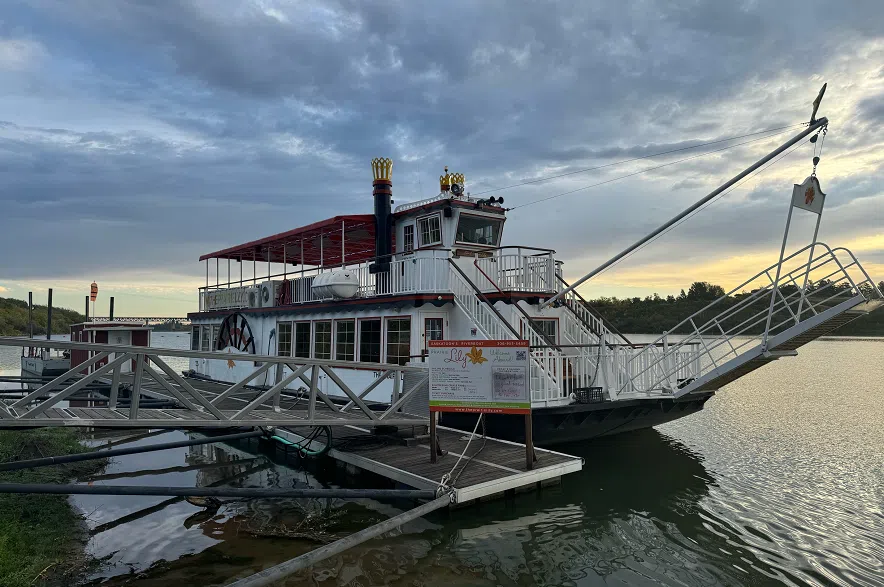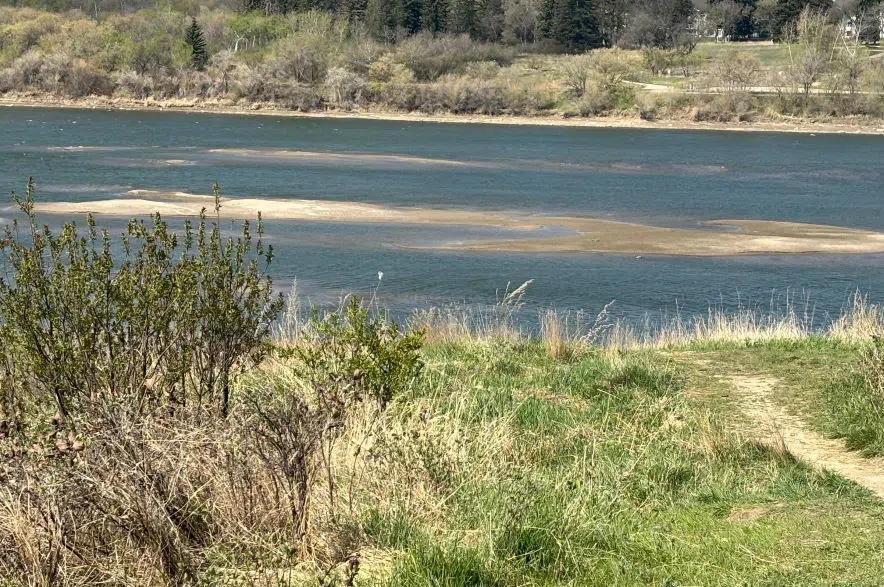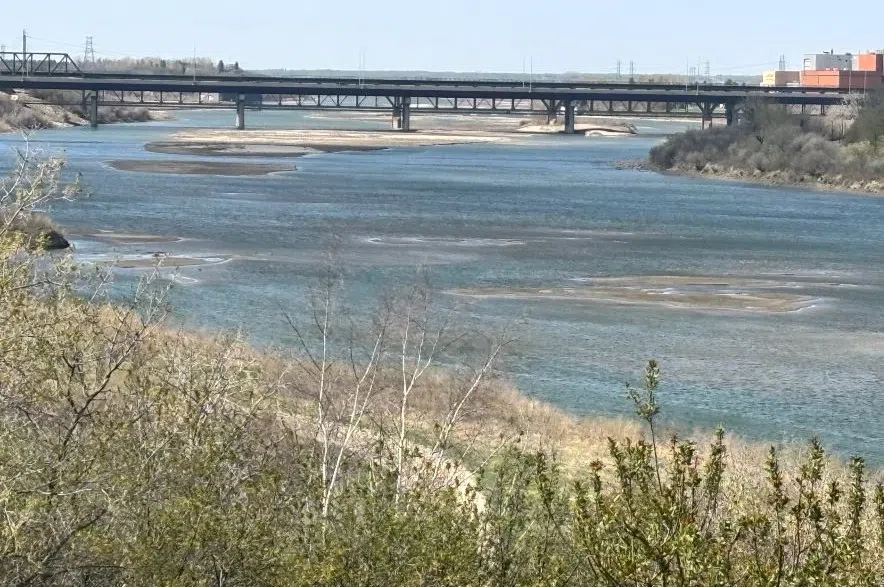Right now, the South Saskatchewan River around Saskatoon is more like a sandbox, according to the owner and captain of the Prairie Lily.
Mike Steckhan, who also owns the famous riverboat that carries thousands of passengers every year, said the water flow in the river over the last few years has been so low that sandbars have taken over, and now, they can’t safely sail.
“What has to happen now is a significant flow that will actually wash the sand out of the valley (and) move it away,” he said
Read more:
- Prairie Lily riverboat to cease operation in 2025, looking for new owners
- Hint of summer splashes into Saskatoon with Pelican plunge
- Car sinks after attempting to cross South Saskatchewan River
He’s suggesting more water be released from Lake Diefenbaker, through the Gardiner Dam, at a flow rate of 900 cubic metres per second for 72 hours, or 400 cubic metres per second for several days. That, in his opinion, would mitigate the problem for the next couple of years.
“We need a high volume flush of water coming at speed to move the sandbars and reopen the channel,” he added.
Right now, according to Shawn Jaques, President and CEO of the Saskatchewan Water Security Agency, the flow rate is 70 cubic metres per second.
Steckhan said he’s been speaking with the Saskatchewan Water Security Agency for the last year with no avail. He suggests there’s plenty of water in Lake Diefenbaker to get rid of the growing sandbars in the river around Saskatoon.
“It’s (the lake) at its highest median level, according to the WSA’s own data… and that amount of flow for three days would drop the lake level .56 of a metre, which wouldn’t even take it to average levels,” he contended.
However, at this point, the WSA isn’t planning on that kind of dam release.
Jaques said years of drought and below-average snow pack in the Rocky Mountains, which fills the lake, have made it impossible to release large amounts of water into the South Saskatchewan River.
“The snow packs are 70 per cent of normal, and so that’s going to have an impact on how much water’s flowing into Lake Diefenbaker,” he said.
When operating the lake and dam, the WSA has to take into account all of its users, including farmers, the Riverhurst Ferry, communities on the lake and industrial users.
“Right now, we don’t have a surplus (of water) to send that large flush down the system if, because of the low inflows,” he added.
Steckhan said that kind of news will have a big impact on his business this year. So far, they’ve had about 5,000 bookings for the summer, some of which will have to be refunded.
“It’s a huge hit…we are now in the process of starting refunds. We’ll refund our customers as soon as we know that particular day won’t we won’t be able to sail,” he said.
If there is a flush of water, he said he and his staff will “do their damndest” to operate.
2025 is supposed to be the last season for the famous river boat, with Steckhan hoping to retire.

The Prairie Lily has sailed the South Saskatchewan River for the past 13 years. (Alex Brown/650 CKOM)
Saskatoon Rowing Club Concerns
Ashtyn Larocque, Club Manager and Coach with the Saskatoon Rowing club, said in a statement, “To say the water levels are hindering our ability to train would be an understatement. The sandbars and low water levels pose a huge threat and risk to the safety of our athletes and equipment.”
Larocque said in rowing, athletes move backwards, meaning they are limited in what they can see ahead of them.
With the sandbars and low water levels, courses need to be re-directed, increasing the danger of collisions and injuries on the water and damage to equipment worth thousands of dollars.
They added that if nothing is done to change water levels, they’ll have to cancel their headrace event that the club hosts in September.
“We have teams come from surrounding provinces to participate in a 5k that goes through Idylwld Victoria, Broadway and University Bridge. The cancellation of this regatta would impact our club immensely.”
While no water will be released for now, Jaques said every 10 days the WSA issues a runoff report and water flow will be continuously monitored.
“If inflows change or levels change… then maybe there are times when we may be able to release more water periodically. We have done that in the past,” he added.
He confirmed, however, that the last large release of water was four years ago, in 2021.












